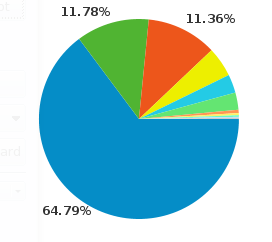A. Rationale for enforcement of the GPL – At present, the enforcement of the GPL license conditions is driven by single developers and organizations supporting Free Software. Most famous is Mr. Harald Welte, former maintainer of the Netfilter/Iptables project, who is running the enforcement project gpl-violations.org. Some years ago, Mr. Welte became aware of the fact that many manufacturers use the Linux kernel in their products without complying with the GPL conditions, and give the necessary credit to the Free Software community. His letters to the companies remained mostly unanswered or negotiations were so protracted that by the time the source code was eventually published, the relevant product was no longer available for sale. Therefore, he decided to take legal action in a more formal way.
After the first enforcement cases became public, more and more interested parties informed Mr. Welte about other violations. He then decided to establish ‘www.gpl-violations.org’ to provide a platform for enforcement activities and public documentation of his and others’ efforts to bring commercial GPL users into GPL compliance.[1] Having access to modified source codes of technical devices is a strong motivation to participate in the enforcement of the GPL, and thus many people support gpl-violations.org.
In 2006, the FSF Europe launched a Freedom Task Force (FTF) to collect and share knowledge about Free Software law and safeguard the interests of Free Software projects. FTF cooperates with gpl-violations.org with regard to GPL compliance issues and facilitates the European Legal Network (ELN), where lawyers and representatives of companies from the software industry maintain a lively exchange of ideas.[2] This strategic approach has been enhanced and refined, and has had impact on the general behaviour of IT industries with regard to GPL compliance.
GPL is popular not just among developers but also among companies because it helps secure a proper competition with regard to a particular software product and prevents unfair withholding of improvements of the software released in the Free Software world. Moreover, as the dual licensing model – i.e. offering a software product under the GPL and a proprietary license – is widely used, it can be expected that companies will also start to enforce their rights in the near future. Even companies that distribute GPL products without holding copyrights may soon begin to enforce the GPL by relying on unfair competition law (instead of copyright law) in order to obtain the complete corresponding source codes of improved software solutions from their competitors.[3]
B. Information about GPL violations – One might think that the detection of GPL violations in proprietary products is difficult or almost impossible, when no source code is at hand or the software is even hidden in an embedded system. In reality, however, there are many different ways to get the necessary information to prove the use of GPL-licensed software.[4] To quote an easy example: On a recent flight, when the entertainment system in the seat in front of me booted, I was surprised to see the typical boot information of the Linux kernel, including a copyright notice of one of my clients.
But GPL violations are not restricted to the Linux kernel. Once, another client of mine was contacted by a customer of a proprietary product asking for support. Thus, my client learned that a header file written by him was made available on the vendor’s website, and that the latter shipped his proprietary product without any information about the fact that the software was licensed under the GPL. Continue reading.






